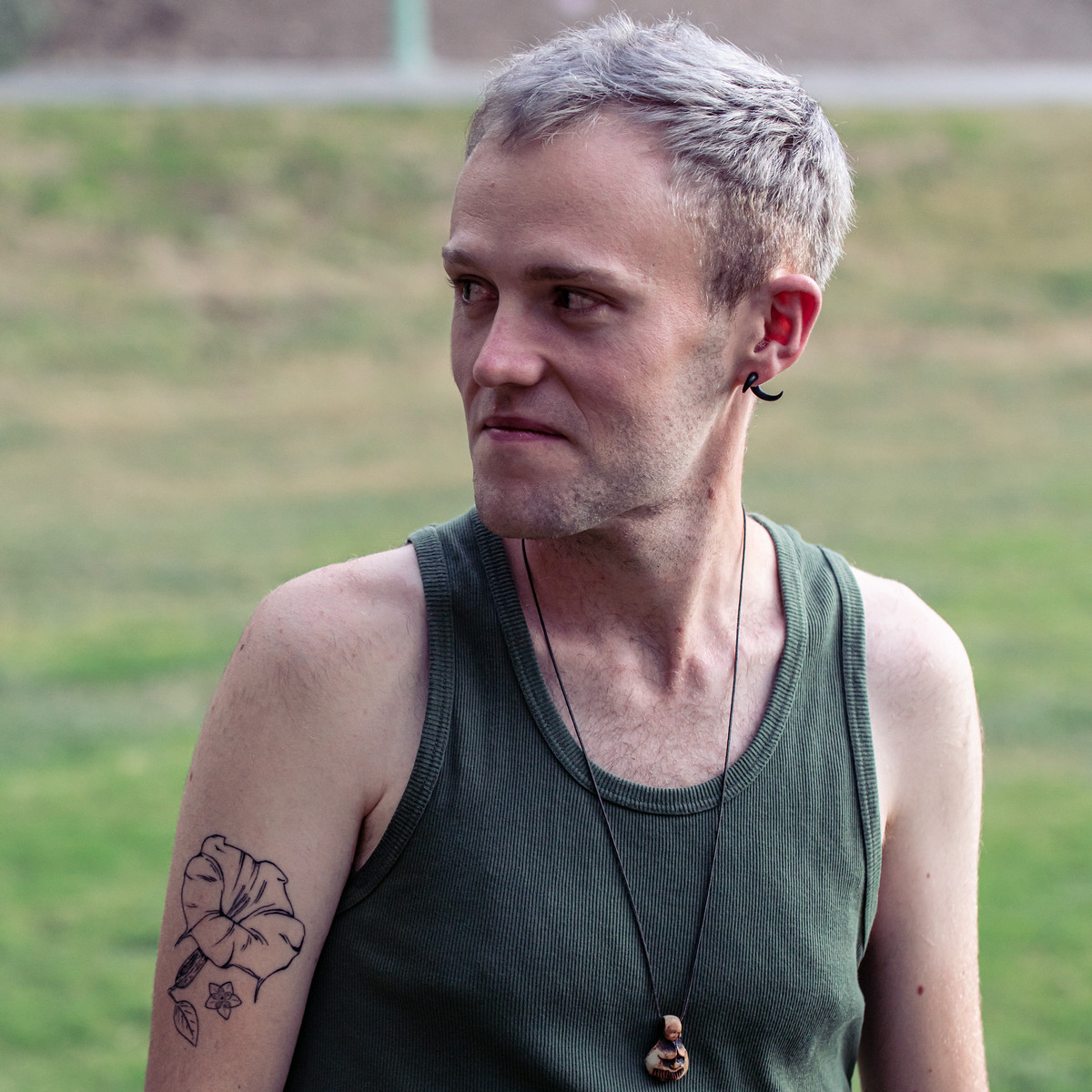Local scientist Jonathan Bailey recently published a new book: “When I Was Red Clay.” In the book, Bailey writes about his struggles growing up and how the natural world, particularly the deserts of southern Utah, provided solace for him. Amongst the many essays in the book, we talk about the colors of the desert and preserving badlands from energy development.

Science Moab: You talk about the colors of the desert in your book. What is their meaning?
Bailey: Red is a color that I had a really hard time with as a kid, part of that being sensory-related. I would turn dolls away because the cheeks were really red, or hide objects that were red, because I just really hated the color. But it also took on meaning as it was my father’s favorite color. As the book says, most of my loves are also red: red rock and its red pigment. Dealing with color is also a metaphor for reconciling the relationship of myself with my former faith and my father, and the relationships throughout my life. Yellow has been the color I always see the most and in the smallest quantities. It’s a seasonal color. In the mountains above Ferron, where I grew up, come spring you would see these blankets of yellow, precious but abundant. I mentioned very early in the book: desert trumpets, which are one of my favorite plants. They have these very delicate little yellow flowers, which is why I chose it. That was my favorite color growing up. The obvious explanation for turquoise is that it’s turquoise itself, the mineral. But also, I’ve been walking ancient trails down here that were used to transport marine shells and pigments. Interestingly, some of those shells that pass through here have been found all the way up in Ferron. While walking these trails, I see these fragments of blue pigment occasionally. And it encapsulates my associations with the color: it’s the color of water and they’re traveling between the ocean to the middle of Utah.
Science Moab: You also talk about the coyote gourd. Can you explain what anachronistic plants are?
Bailey: So, the coyote gourd is a plant that occurs from southern Utah all the way through Sonora. Basically, it’s a plant that adapted to animals that no longer exist, like mammoths or extinct versions of javelina. There are a number of plants that evolved in response to things like mammoths, but their main means of propagation have gone extinct. They use other means of propagation, which are ecologically expensive, such as water dispersal, or rodents taking their seeds into their dens. It leaves these open-ended relationships, in that these plants only exist because of animals that no longer exist. We have a lot of examples in our fridges, such as avocados, which evolved [in relationship to] large extinct mammals but exist primarily now because of humans.
Science Moab: We talked earlier about your work photographing rock art for conservation. You were doing work in the Blue Hills badlands, which is between the San Rafael Swell and the northern part of Capitol Reef, when the Bureau of Land Management was considering leasing that area for oil and gas exploration. Could you talk about that?
Bailey: We have worked on that central area of Utah for probably the last 10 years. Over this period of time, there have been something like 500,000 acres that have been proposed for oil and gas, and we’ve so far successfully deferred all of those leases. It’s an incredible area, and very diverse. You have a lot of endemic plants that have adapted to this very sandy environment. So you have Asclepias ruthiae [Ruth’s milkweed] with these purple star-like flowers. You also have really unusual plants like the Colorado feverfew that attach themselves to the top parts of cliffs. These are really high-wind areas, but they stay at the surface of the ground where there’s effectively no wind. Then you start going north and you have rich archaeology, immense amounts of dinosaur bones and tracks. And you also have other rare plants such as Ferron’s milkvetch. It’s an incredible area. One of the things I wanted to do with this book and with a lot of the work I do is emphasize how valuable these places and resources are.
Science Moab is a nonprofit dedicated to engaging community members and visitors with the science happening in Southeast Utah and the Colorado Plateau. To learn more and listen to the rest of this interview, visit www.sciencemoab.org/radio.




